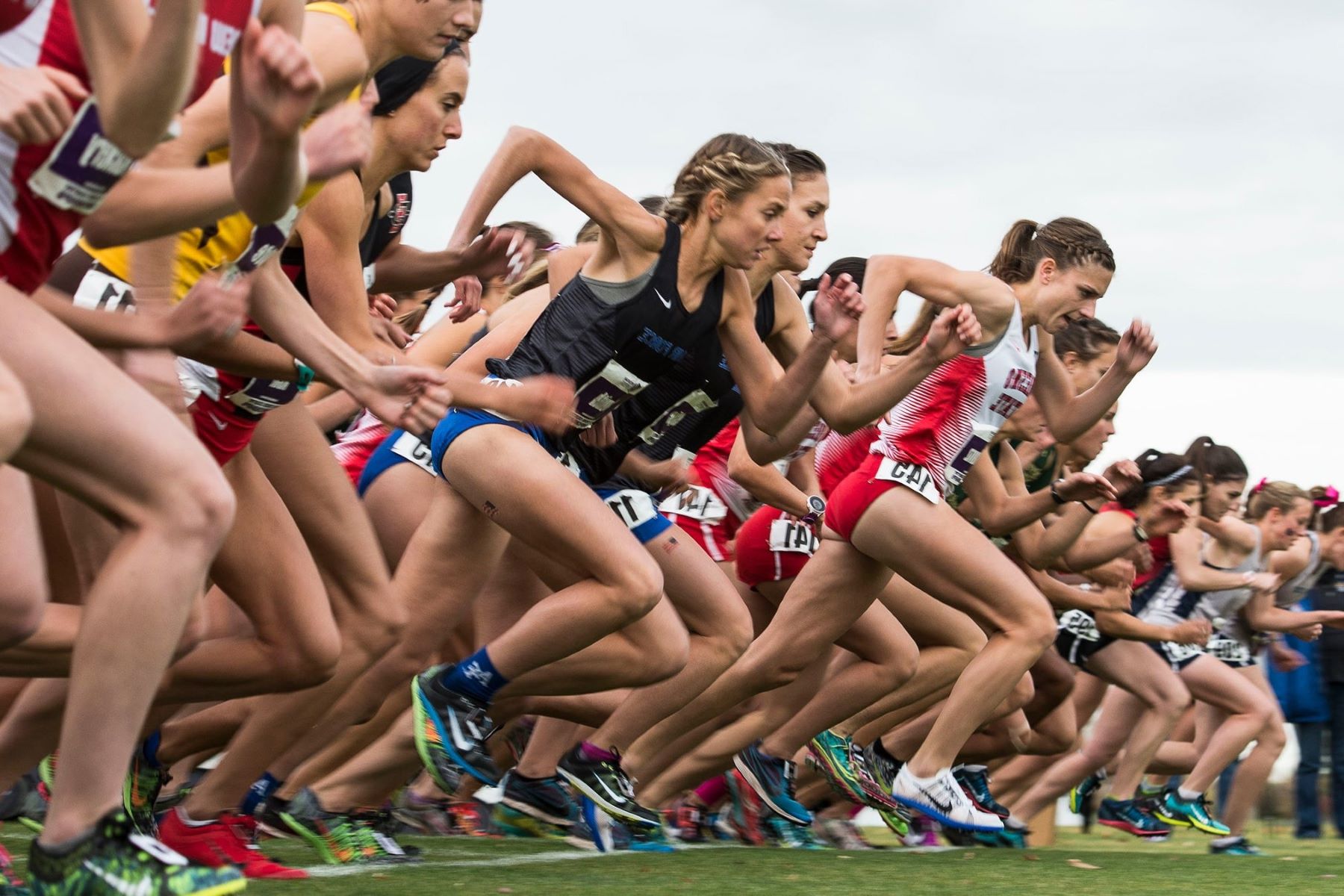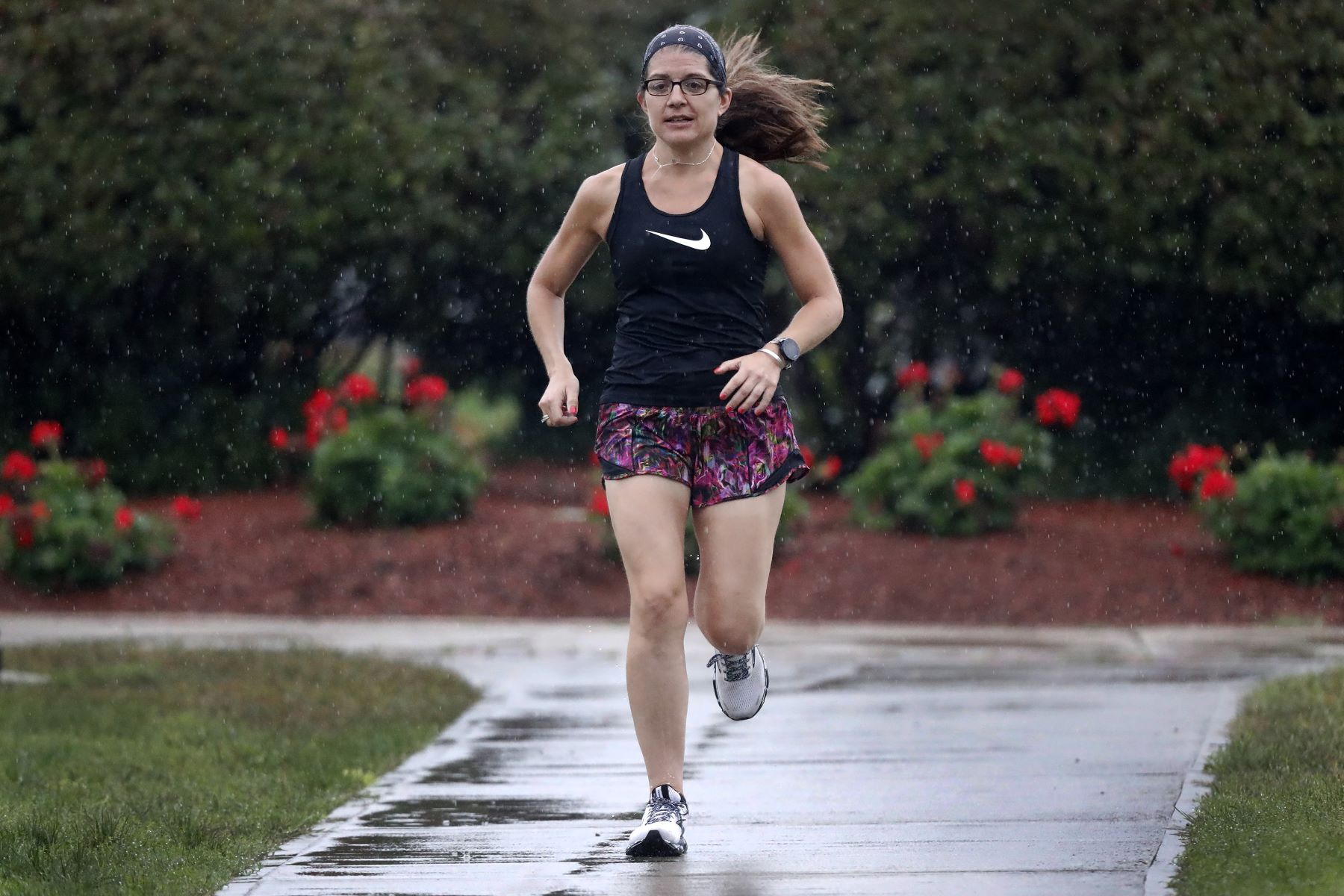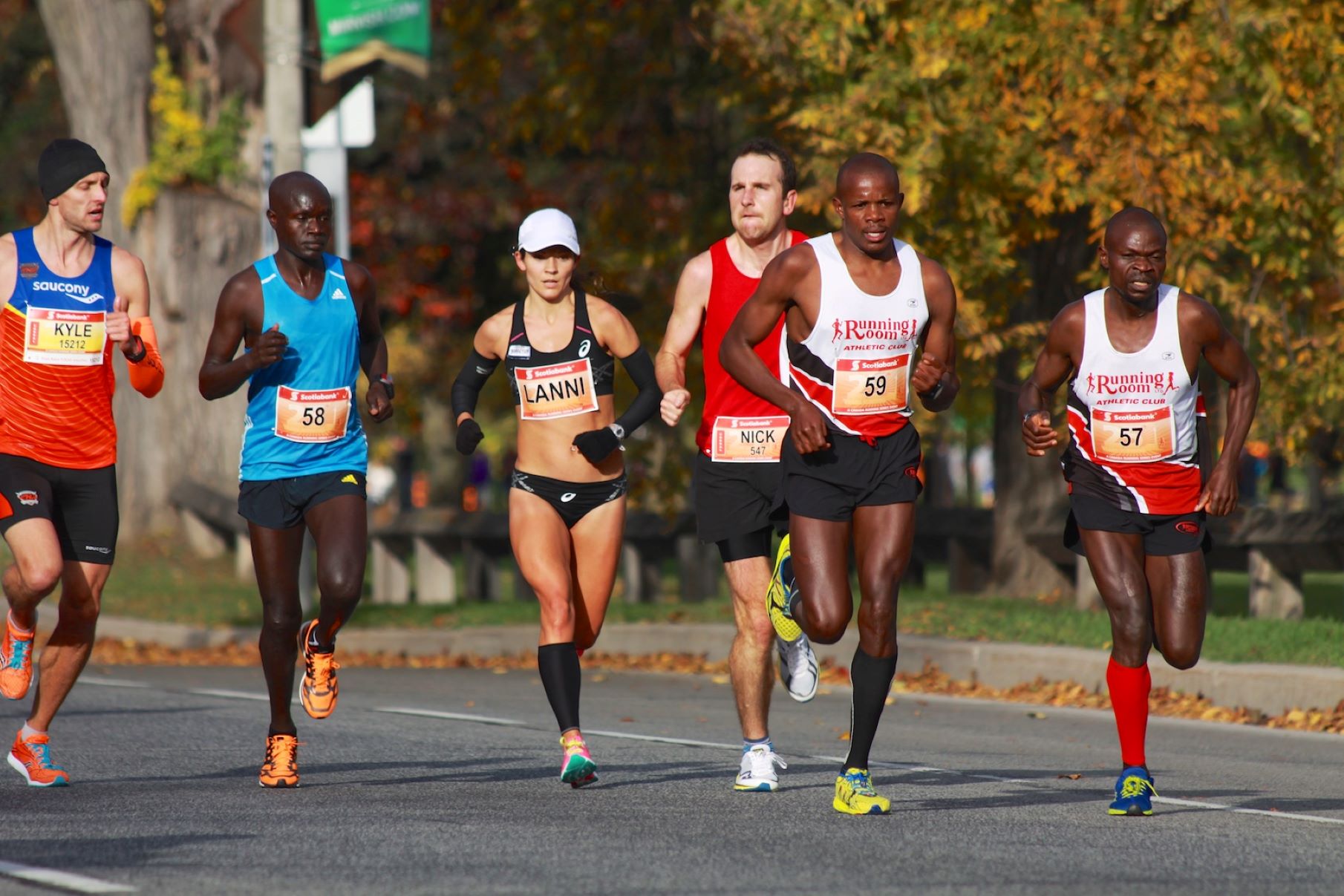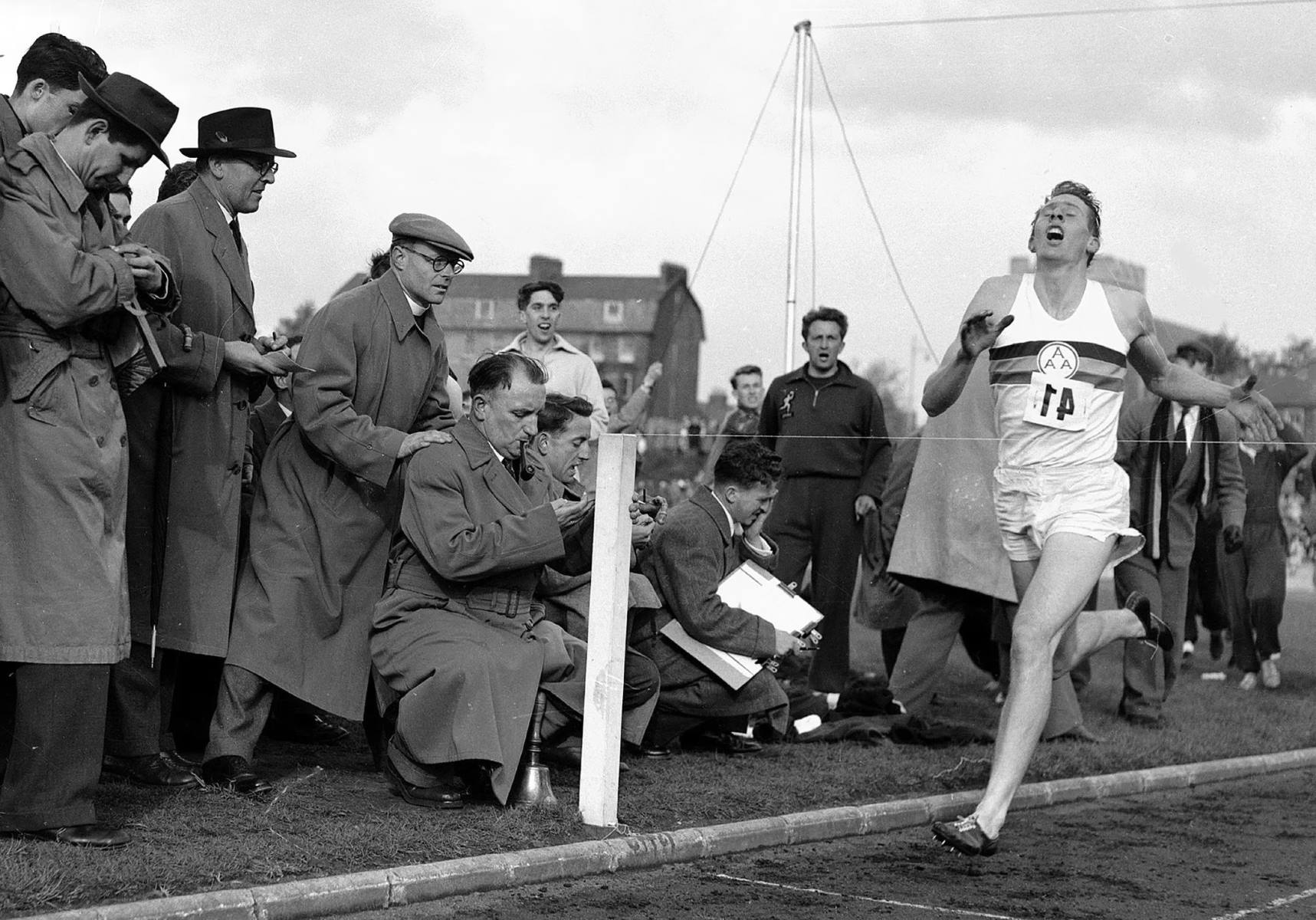Home>Training & Techniques>The Evolution Of Women’s Running: A Historical Perspective


Training & Techniques
The Evolution Of Women’s Running: A Historical Perspective
Published: March 3, 2024
Explore the historical evolution of women's running, from training techniques to groundbreaking milestones. Uncover the transformative journey of women in the world of running.
(Many of the links in this article redirect to a specific reviewed product. Your purchase of these products through affiliate links helps to generate commission for Therunningadvisor.com, at no extra cost. Learn more)
Table of Contents
Introduction
The evolution of women's running is a captivating journey that spans centuries, marked by remarkable milestones and societal shifts. From its humble beginnings to the modern era, women's running has transcended barriers, shattered stereotypes, and empowered countless individuals. This article delves into the historical perspective of women's running, exploring its early origins, pivotal moments, and the transformative impact it has had on society.
Throughout history, women's participation in running has been a testament to their resilience, determination, and unwavering spirit. As we embark on this exploration, we will uncover the profound significance of women's running, from its emergence as a form of liberation to its role in promoting gender equality and fostering a sense of community.
Join us on this enlightening journey through time as we unravel the compelling narrative of women's running, celebrating the triumphs, challenges, and enduring legacy that have shaped this dynamic and empowering sport.
Read more: Nutrition Guide For Women’s Running
Early Beginnings of Women's Running
The early origins of women's running can be traced back to ancient civilizations, where running was an integral part of daily life and cultural traditions. In ancient Greece, the birthplace of the Olympic Games, running held a revered status, with male athletes competing in prestigious events. However, historical records also indicate that women participated in running races as part of religious ceremonies and festivals, showcasing their physical prowess and athleticism.
During the 19th century, the emergence of women's running as a formalized sport gained momentum. The Victorian era witnessed a gradual shift in societal attitudes towards women's physical activities, prompting a growing interest in sports and recreational pursuits. As a result, women's running began to garner attention, albeit within the constraints of societal norms and expectations.
One pivotal moment in the early history of women's running occurred in 1928 when women were first allowed to compete in track and field events at the Olympic Games. This milestone marked a significant step towards recognizing women's athletic abilities and paved the way for greater inclusivity in sports.
Despite these advancements, women's running faced persistent challenges and barriers, including societal prejudices and limited opportunities for competitive participation. However, pioneering individuals and trailblazing athletes defied conventions, advocating for equal opportunities and striving to elevate the status of women's running.
The early beginnings of women's running reflect a profound resilience and determination among women to claim their place in the world of sports. Their unwavering commitment to breaking barriers and challenging societal norms laid the groundwork for the transformative journey that lay ahead, shaping the course of women's running for generations to come.
As we delve into the historical roots of women's running, it becomes evident that the early pioneers and advocates played a pivotal role in laying the foundation for the sport's evolution. Their enduring legacy continues to inspire and empower women in the pursuit of athletic excellence, embodying the spirit of resilience and empowerment that defines women's running to this day.
Women's Running in the 20th Century
The 20th century marked a pivotal era for women's running, characterized by significant strides towards gender equality and the recognition of women's athletic capabilities. As societal attitudes continued to evolve, women's participation in running gained momentum, reflecting a shift towards greater inclusivity and opportunities for female athletes.
During the early decades of the 20th century, women's running faced formidable challenges, including entrenched gender stereotypes and limited access to competitive platforms. Despite these obstacles, pioneering female athletes emerged as trailblazers, defying societal norms and advocating for equal recognition in the realm of sports.
One of the defining moments in the 20th century was the establishment of women's track and field events at the Olympic Games. In 1928, women were granted the opportunity to compete in track and field events, marking a historic milestone in the journey towards gender parity in sports. This watershed moment not only showcased the athletic prowess of women but also symbolized a significant step towards dismantling barriers that had long hindered their participation in competitive running.
As the century progressed, women's running continued to gain prominence, with the emergence of dedicated female athletes who shattered records and redefined the boundaries of what was deemed achievable in the sport. Their remarkable achievements not only captivated audiences worldwide but also inspired a new generation of women to pursue their athletic aspirations with unwavering determination.
The 20th century also witnessed the gradual expansion of opportunities for women's distance running, as marathons and long-distance races became increasingly accessible to female athletes. This shift represented a monumental leap forward in challenging traditional gender norms and fostering a more inclusive environment for women in the running community.
Moreover, the advocacy for gender equality in sports gained momentum, leading to heightened awareness of the need for equitable representation and support for female runners. Organizations and initiatives dedicated to promoting women's running flourished, advocating for equal recognition, resources, and opportunities for female athletes to thrive in the sport.
The 20th century laid the groundwork for the transformative journey of women's running, setting the stage for the remarkable advancements and achievements that would unfold in the decades to come. The enduring legacy of the trailblazing women who defied conventions and pushed the boundaries of athletic excellence continues to inspire and resonate with aspiring female runners, embodying the spirit of empowerment and resilience that defines women's running in the modern era.
The Impact of Title IX on Women's Running
The passage of Title IX in 1972 marked a monumental turning point in the landscape of women's sports, including the realm of running. Title IX, a federal civil rights law in the United States, mandated gender equity in educational programs and activities, including athletics, at institutions receiving federal funding. This pivotal legislation not only transformed the opportunities available to female athletes but also catalyzed a seismic shift in the culture of women's running.
Title IX played a transformative role in dismantling systemic barriers that had long hindered women's participation in sports, including running. By requiring educational institutions to provide equal resources and support for both male and female athletes, Title IX paved the way for a new era of inclusivity and recognition for women in the realm of running.
One of the most profound impacts of Title IX was the exponential growth in the number of female participants in track and field and cross-country programs at the high school and collegiate levels. With increased access to coaching, facilities, and competitive opportunities, female runners were able to hone their skills and compete at levels that were previously inaccessible. This surge in participation not only showcased the remarkable athletic talents of women but also fostered a sense of empowerment and camaraderie within the running community.
Furthermore, Title IX sparked a paradigm shift in the perception of women's running, elevating its status from a marginalized pursuit to a respected and celebrated athletic endeavor. As female runners gained greater visibility and recognition, their achievements and contributions to the sport garnered widespread acclaim, inspiring countless individuals and challenging entrenched gender stereotypes.
The impact of Title IX reverberated beyond the realm of athletics, transcending into broader societal implications. By promoting gender equity and fostering a culture of inclusivity, Title IX empowered women to pursue their athletic aspirations with unwavering determination, instilling a sense of confidence and agency that transcended the track and field.
In essence, the impact of Title IX on women's running was profound and far-reaching, reshaping the landscape of the sport and empowering generations of female athletes to embrace their potential and strive for excellence. The enduring legacy of Title IX continues to resonate in the strides made towards gender equality in sports, embodying the spirit of empowerment and inclusivity that defines the modern era of women's running.
The Rise of Women's Distance Running
The rise of women's distance running represents a transformative and empowering chapter in the history of the sport. Throughout the latter half of the 20th century and into the 21st century, female athletes have defied conventional limitations, redefining the boundaries of endurance and resilience in distance running.
In the 1960s and 1970s, a groundbreaking shift occurred as women began to assert their presence in long-distance running events. Prior to this period, societal norms and misconceptions had perpetuated the belief that women were not suited for endurance sports. However, a wave of pioneering female runners shattered these stereotypes, embarking on a journey that would revolutionize the landscape of distance running.
One of the defining moments in the rise of women's distance running was the emergence of marathons as a platform for female athletes to showcase their exceptional abilities. The 1972 New York City Marathon marked a historic milestone as it opened its doors to female participants, providing a pivotal opportunity for women to demonstrate their prowess in the grueling 26.2-mile race. This watershed moment not only symbolized a triumph over gender barriers but also ignited a movement that would propel women's distance running to unprecedented heights.
As female runners embraced the challenges of long-distance events, they shattered records, defied expectations, and inspired a new generation of women to pursue their athletic aspirations. The remarkable achievements of trailblazing athletes such as Kathrine Switzer, the first woman to officially run the Boston Marathon, and Grete Waitz, a legendary Norwegian long-distance runner, captivated the world and galvanized a global shift in attitudes towards women's participation in distance running.
The rise of women's distance running also witnessed the elevation of ultra-marathons and trail running as arenas for female athletes to showcase their extraordinary endurance and tenacity. Events such as the Western States Endurance Run and the Ultra-Trail du Mont-Blanc became platforms for women to push the boundaries of physical and mental fortitude, challenging traditional perceptions of what women could achieve in the realm of distance running.
Moreover, the inclusivity and camaraderie within the running community fostered an environment where female athletes could thrive and support one another in their pursuit of long-distance goals. The sense of empowerment and solidarity that permeated women's distance running exemplified the resilience and determination of female athletes, transcending the confines of the sport and inspiring individuals to embrace their potential.
The rise of women's distance running stands as a testament to the indomitable spirit of female athletes who have defied conventions, shattered barriers, and redefined the parameters of endurance and resilience. Their enduring legacy continues to inspire and empower women to embrace the challenges of distance running, embodying the unwavering determination and fortitude that define the modern era of women's running.
Women's Running in the Modern Era
Women's running in the modern era represents a dynamic and transformative landscape, characterized by unprecedented advancements, inclusivity, and a profound redefinition of the sport's boundaries. As we navigate the 21st century, female athletes have emerged as trailblazers, reshaping the narrative of women's running and inspiring a global movement towards empowerment and equality.
The modern era has witnessed a remarkable surge in the participation of women in running, transcending geographical boundaries and cultural barriers. Female athletes from diverse backgrounds have embraced the sport, showcasing their exceptional talents and fortitude on a global stage. The proliferation of women's running events, from local races to international marathons, reflects the growing momentum and enthusiasm surrounding female participation in the sport.
Moreover, the advent of social media and digital platforms has amplified the visibility of women's running, providing a powerful avenue for athletes to share their stories, connect with fellow runners, and inspire a burgeoning community of enthusiasts. Through online networks and virtual forums, female runners have found a supportive and inclusive space to celebrate their achievements, seek guidance, and foster a sense of camaraderie that transcends geographical boundaries.
The modern era has also witnessed a paradigm shift in the representation and recognition of female runners in mainstream media and popular culture. Trailblazing athletes have become influential role models, captivating audiences with their remarkable achievements and using their platforms to advocate for gender equality, body positivity, and the empowerment of women in sports. Their impact extends beyond the track, resonating with individuals of all ages and backgrounds, and igniting a spirit of determination and resilience in aspiring female runners.
Furthermore, the evolution of women's running in the modern era has been marked by a concerted effort to address gender disparities in the sport, advocating for equitable opportunities, resources, and support for female athletes. Initiatives aimed at promoting women's participation in running, fostering mentorship programs, and providing access to specialized training have contributed to a more inclusive and supportive environment for female runners to thrive and excel.
In essence, women's running in the modern era embodies a narrative of empowerment, inclusivity, and boundless potential. As female athletes continue to defy expectations, break records, and inspire future generations, the legacy of women's running stands as a testament to the enduring spirit of resilience and determination that defines the sport in the contemporary age.
Conclusion
The evolution of women's running is a testament to the indomitable spirit, resilience, and unwavering determination of female athletes throughout history. From its early beginnings in ancient civilizations to the modern era, women's running has transcended societal barriers, shattered stereotypes, and redefined the boundaries of athletic achievement. The historical perspective of women's running unveils a narrative of empowerment, inclusivity, and transformative impact, shaping the sport into a dynamic and inspiring platform for female athletes worldwide.
As we reflect on the historical journey of women's running, it becomes evident that the early pioneers and trailblazing athletes played a pivotal role in laying the foundation for the sport's evolution. Their unwavering commitment to breaking barriers and challenging societal norms has paved the way for the remarkable advancements and achievements that have unfolded over the centuries.
The 20th century marked a pivotal era for women's running, characterized by significant strides towards gender equality and the recognition of women's athletic capabilities. The passage of Title IX in 1972 catalyzed a seismic shift in the culture of women's running, fostering inclusivity and empowerment for female athletes. The rise of women's distance running further exemplified the resilience and determination of female athletes, redefining the boundaries of endurance and fortitude in the sport.
In the modern era, women's running has emerged as a dynamic and transformative landscape, characterized by unprecedented advancements, inclusivity, and a profound redefinition of the sport's boundaries. Female athletes have become influential role models, using their platforms to advocate for gender equality, body positivity, and the empowerment of women in sports.
The enduring legacy of women's running stands as a testament to the enduring spirit of resilience and determination that defines the sport in the contemporary age. As female athletes continue to defy expectations, break records, and inspire future generations, the narrative of women's running embodies a spirit of empowerment, inclusivity, and boundless potential.
In conclusion, the historical perspective of women's running encapsulates a journey of triumph, perseverance, and empowerment, underscoring the transformative impact of female athletes in reshaping the landscape of the sport. The legacy of women's running serves as an enduring testament to the unwavering spirit of resilience and determination that defines the sport, inspiring generations of female athletes to embrace their potential and strive for excellence.















